The Sony a7C is Sony’s smallest full-frame camera to-date, but unlike its larger brother the a7III that features dual memory card slots, the a7C is restricted to just one memory card slot.
In this guide I’ll be clarifying which memory cards are supported in the a7C and also which ones I recommend for both stills and video shooting.
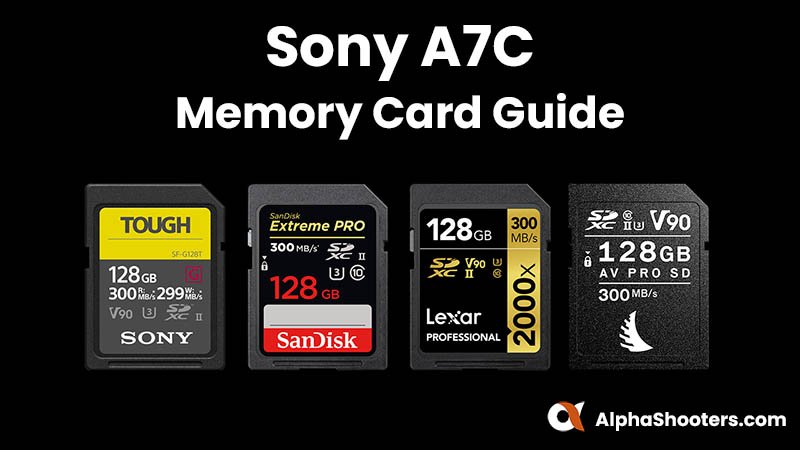
Sony A7C / A7CII / A7CR Forum & Facebook Group
If you are looking for further help and advice on the A7C or would simply like to share your photos and videos, then please head over to our friendly full-frame Forum. If you prefer Facebook then I also run the Sony A7C + A7CII + A7CR Shooters Group.
Table of Contents[Hide][Show]
- What Memory Cards are Supported?
Top 10 UHS-II Memory Cards+−
- 1. Sony SF-G Tough UHS-II (300/299)
- 2. SanDisk Extreme Pro UHS-II (300/260)
- 3. Lexar Professional 2000X UHS-II (300/260)
- 4. ProGrade V90 UHS-II (300/250)
- 5. Angelbird AV Pro Mk 2 V90 (300/280)
- 6. Transcend SD 700S UHS-II (285/180)
- 7. Sony SF-M Tough UHS-II (277/150)
- 8. Sony SF-M UHS-II (277/150)
- 9. ProGrade V60 UHS-II (250/130)
- 10. Sony SF-E UHS-II (270/120)
- Memory Cards for Recording Video
- What Size Memory Card Do You Need?
- How Many Images Can Be Recorded on a Memory Card?
- Movie Record Times
- Summary and Recommendations
- FAQs
What Memory Cards are Supported?
The Sony a7C supports UHS-I and also the faster UHS-II compliant memory cards.
Top 10 UHS-II Memory Cards
If you insist on only using the fastest SD cards, then here are my top 10 recommendations for UHS-II SD cards for the Sony a7C:
1. Sony SF-G Tough UHS-II (300/299)

With a maximum read speed of 300MB/s and a write speed of 299MB/s the Sony SF-G Tough cards are currently the fastest SD card on the market. They are rated v90 for video and available in sizes from 32GB up to 256GB.
These cards are 18 times stronger than traditional SD cards, bend proof to 180N, drop-proof to 5 meters, waterproof to a depth of 5 meters for up to 72 hours (IPX8 rating) and dust proof with an IP6X rating.
Tough cards feature a one-piece ribless structure and don’t have the common lock switch, they are also X-ray proof, magnet proof, anti-static and temperature proof.
2. SanDisk Extreme Pro UHS-II (300/260)
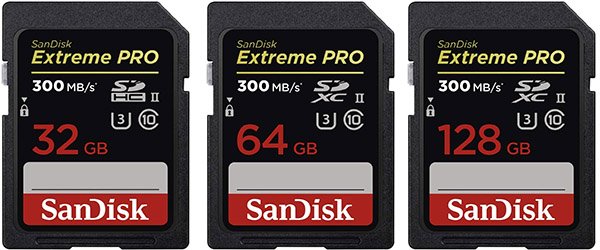
The SanDisk Extreme Pro cards have a claimed maximum read speed of 300MB/s and a write speed of 260MB/s. They are U3 rated (30MB/s) but SanDisk has not given them a V rating, so I don’t recommend these for video. They are available in sizes from 32GB up to 128GB.
3. Lexar Professional 2000X UHS-II (300/260)

The Lexar Professional 2000X cards claim a maximum read speed of 300MB/s and a write speed of 260MB/s. They are rated V90 for video and are available in sizes from 32GB up to 128GB.
4. ProGrade V90 UHS-II (300/250)
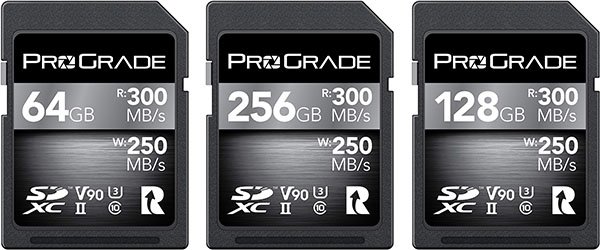
The ProGrade V90 cards claim a maximum read speed of 300MB/s and a write speed of 250MB/s. They are rated V90 for video are available in sizes from 64GB up to 256GB.
5. Angelbird AV Pro Mk 2 V90 (300/280)
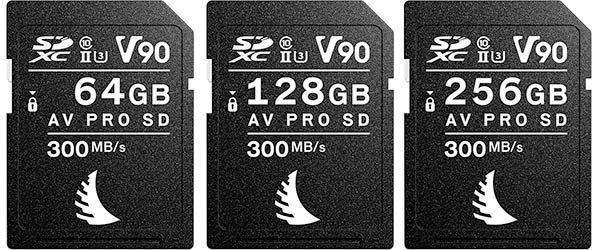
The Angelbird AV Pro Mk 2 V90 UHS-II memory cards support read speeds of up to 300 MB/s and write speeds of 280 MB/s. They are also V90 rated. They are currently available in sizes from 64GB up to 256GB.
6. Transcend SD 700S UHS-II (285/180)
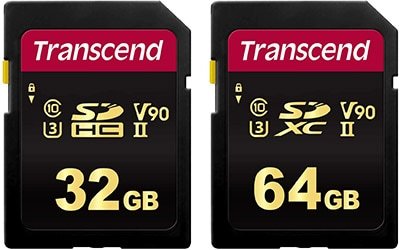
The Transcend SD 700S cards have a claimed maximum read speed of 285MB/s and a write speed of 180MB/s. They are rated V90 for video and are available in 32GB and 64GB sizes.
7. Sony SF-M Tough UHS-II (277/150)

Sony’s SF-M Tough Series are similar to the more expensive SF-G version but these are only rated V60 for video and their read time has been cut to 277MB/s and the write time to 150MB/s. They are available in sizes from 32GB up to 256GB.
8. Sony SF-M UHS-II (277/150)

Sony’s SF-M Series are identical to the SF-M Tough Series just without the added toughness so they cost a little less. The Sony SF-M cards have a claimed read speed of 277MB/s and a write speed of 150MB/s. They are rated V60 for video and are available in sizes from 32GB up to 256GB.
9. ProGrade V60 UHS-II (250/130)
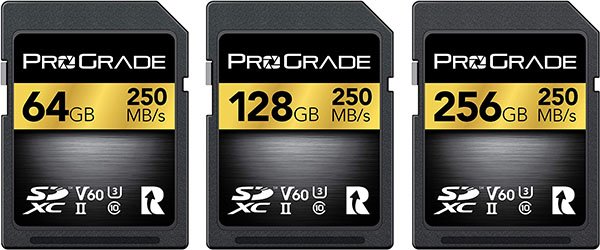
The ProGrade V60 cards have a claimed read speed of 250MB/s and a write speed of 130MB/s. They are rated V60 for video and available in sizes from 64GB up to 256GB.
10. Sony SF-E UHS-II (270/120)
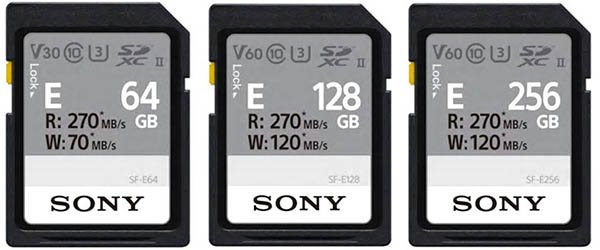
The Sony SF-E UHS-II SD cards are the lowest cost UHS-II compatible cards that Sony currently sells. They have a claimed read speed of 270MB/s and a write speed of 70MB/s for the 64GB card and 120MB/s for the larger 128GB and 256GB cards. They are also V60 rated for video.
Top 5 UHS-I Memory Cards
If you don’t shoot a lot of continuous bursts then you don’t really need the faster and more expensive UHS-II cards, instead you can save yourself quite a bit of money by purchasing UHS-I cards for your a7C instead. Here are my top 5 UHS-I SD card recommendations:
1. SanDisk Extreme Pro UHS-I (170/90)
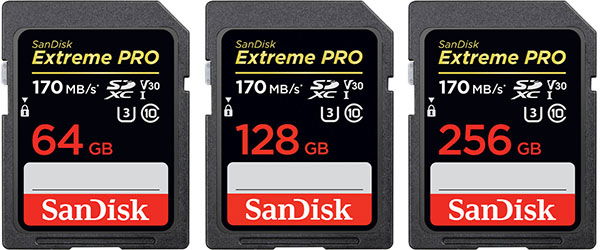
The SanDisk Extreme Pro cards have a claimed read speed of 170MB/s and a write speed of 90MB/s. They are rated V30 for video.
2. Sony Professional Series UHS-I (95/90)

The Sony Professional Series cards have a claimed read speed of 95MB/s and a write speed of 90MB/s. They are rated U3.
Price Check & Buyer Reviews for Sony Professional Series UHS-I
At: Amazon
3. SanDisk Extreme UHS-I (150/70)

The SanDisk Extreme cards have a claimed read speed of 150MB/s and a write speed of 70MB/s. They are rated V30 for video.
4. Sony Expert Series UHS-I (94/70)
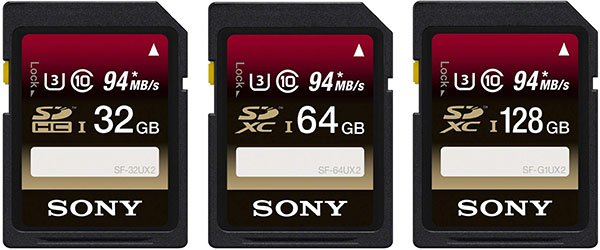
The Sony Expert Series cards have a claimed read speed of 94MB/s and a write speed of 70MB/s. They are rated U3.
Price Check & Buyer Reviews for Sony Expert Series UHS-I
At: Amazon
5. Transcend 500S UHS-I (95/60)

The Transcend 500S cards have a claimed read speed of 95MB/s and a write speed of 60MB/s. They are rated V30 for video.
Memory Card Readers
If you want to take advantage of the UHS-II speeds when copy images or videos back over to your computer, then you’ll need a UHS-II SD card reader.
Sony MRW-S1 UHS-II USB Memory Card Reader/Writer
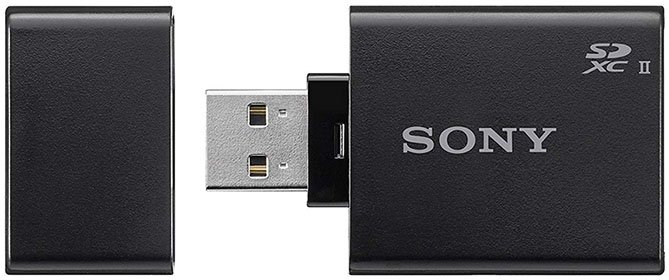
Sony’s MRW-S1 UHS-II USB SD Card Reader/Writer can read/write to UHS-II SD Cards via a USB 3.1 interface and is backward compatible with UHS-I SD cards. The MRW-S1 together with Sony SF-G cards can transfer files to and from your computer around 2.6x faster than UHS-I SD cards.
Memory Cards for Recording Video
The Sony a7C supports a maximum of 100Mbps 4k video which is around 12.5 MB/s. This means that you really don’t need to buy the fastest memory cards for 4k video recording.
Any memory cards that are rated v30, v60, v90 card will work well when shooting 4k video.
32GB and smaller memory cards are labelled SDHC and these are formatted to 32-bit, this restricts the file size to 4GB and you’ll find that longer video files will be broken-up into 4GB chunks.
64GB and larger memory cards are labelled SDXC, these are formatted with a 64-bit file system which support much larger file sizes, so you don’t need to worry about your video files being split.
For video I’d recommend a card like the SanDisk Extreme PRO UHS-I 128GB SDXC Memory Card.
What Size Memory Card Do You Need?
If you are shooting a lot of continuous bursts with the Sony a7C, then you’ll probably want to use a 128GB card or larger capacity card. Although if you are only shooting in JPEG file format you’ll get away with 64GB cards as well.
If you don’t shoot continuous bursts and come home with thousands of images, then a 32GB or 64GB card will most likely be large enough for your needs.
For shooting video you’ll probably want a 128GB or larger card.
The following tables will help you to better understand what size cards you need.
How Many Images Can Be Recorded on a Memory Card?
The table below shows the approximate number of images that can be recorded on a memory card in the a7C formatted in-camera and with the aspect ratio set to 3:2 and JPEG size set to L: 24M.
The values may vary depending on the shooting conditions and the type of memory card used.
| File Format | 64GB | 128GB |
|---|---|---|
| JPEG Standard | 8700 | 17000 |
| JPEG Fine | 6100 | 12000 |
| JPEG Extra fine | 3400 | 6800 |
| RAW & JPEG (Compressed RAW) | 1600 | 3300 |
| RAW (Compressed RAW) | 2300 | 4600 |
| RAW & JPEG (Uncompressed RAW) | 1000 | 2000 |
| RAW (Uncompressed RAW) | 1200 | 2400 |
Movie Record Times
The table below shows the approximate total recording times using a Sony memory card formatted in the Sony a7C. Please note that the values may vary depending on the shooting conditions and the type of memory card used.
| File Format | Record Frame Rate | Bit-rate | 64GB | 128GB |
|---|---|---|---|---|
| XAVC S 4K | 30p/25p | 100M | 1 h 10 min | 2 h 20 min |
| XAVC S 4K | 30p/25p | 60M | 1 h 50 min | 3 h 20 min |
| XAVC S HD | 60p/50p | 50M | 2 h 20 min | 4 h 40 min |
| XAVC S HD | 60p/50p | 25M | 4 h 30 min | 9 h |
Summary and Recommendations
If you are shooting a lot of continuous bursts with your a7C and simply want the fastest card no matter the price, then the Sony SF-G Tough UHS-II (300/299) SD cards are the ones for you.
That said, I personally prefer using the Sony SF-M UHS-II (277/150) cards because they are only a fraction slower that the SF-G UHS-II cards when it comes to write speeds, but they are considerably less expensive.
If you don’t shoot a lot of continuous bursts then you really don’t need UHS-II cards and a card like the SanDisk Extreme Pro UHS-I (170/90) will be fine.
For shooting 4k video with the a7C I’d also recommend the SanDisk Extreme Pro UHS-I (170/90), just make sure it’s 64GB or larger (SDXC) to prevent your files being split into 4GB chunks.
If you are using a UHS-II card reader then you can still benefit from the UHS-II speeds when reading the files back to your computer. So even if you don’t shoot continuous bursts you might still want to invest in UHS-II cards simply to speed up those file transfers.
FAQs
The Sony a7C supports UHS-I and also the faster UHS-2 compliant SD memory cards, both SDHC and SDXC formats are supported.
The Sony a7C has a single memory card slot.
Enter the menu and select the 5th icon at the top that looks like a toolbox. Now move to Setup5 (5/6) and scroll down to select the format option.


Leave a Reply